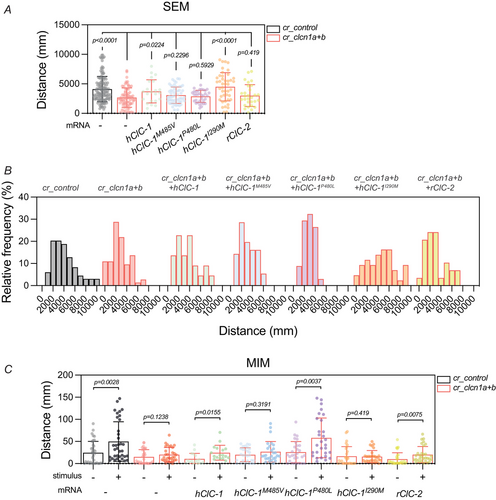Fig. 7 RESCUE OF MOVEMENT DEFECTS BY MYTONIA MUTATIONS AND OTHER CLC CHANNELS A, total distance parameter recorded during the SEM test for each group. B, histogram showing the frequency of the distances travelled by each group during the SEM test. C, total distance parameter recorded during the MIM test for each group. In A and C, bars represent means ± SD of the total distance, where each dot represents a single larva (A; cr_control, n = 133; cr_clcn1a+b, n = 73; cr_clcn1a+b + hClC-1, n = 22; cr_clcn1a+b + hClC-1 M485V, n = 56; cr_clcn1a+b + hClC-1 P480L, n = 34; cr_clcn1a+b + hClC-1 I290M, n = 43; cr_clcn1a+b + rClC-2, n = 29. C; cr_control, n = 36; cr_clcn1a+b, n = 31; cr_clcn1a+b + hClC-1, n = 17; cr_clcn1a+b + hClC-1 M485V, n = 28; cr_clcn1a+b + hClC-1 P480L, n = 29; cr_clcn1a+b + hClC-1 I290M, n = 29; cr_clcn1a+b + rClC-2, n = 31). The graphs show the accumulation of 2−3 independent experiments (N = 2–3). Statistical analysis according to ordinary one-way ANOVA followed by uncorrected Fisher's LSD (A) or Kruskal–Wallis followed by uncorrected Dunn's multiple comparisons test
Image
Figure Caption
Acknowledgments
This image is the copyrighted work of the attributed author or publisher, and
ZFIN has permission only to display this image to its users.
Additional permissions should be obtained from the applicable author or publisher of the image.
Full text @ J. Physiol.

